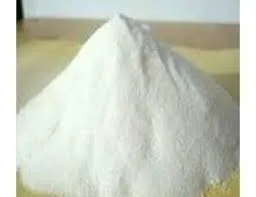
Nov . 16, 2024 00:42 Back to list
Exploring the Applications and Benefits of Hydroxypropyl Methylcellulose in Various Industries
Hydroxypropyl Methylcellulose (HPMC) An Overview
Hydroxypropyl Methylcellulose (HPMC) is a cellulose derivative that has gained substantial popularity across various industries due to its unique properties and versatility. As a non-ionic, water-soluble polymer, HPMC is primarily derived from natural cellulose, which is modified through a series of chemical processes. This modification endows HPMC with distinct characteristics that make it suitable for numerous applications, ranging from pharmaceuticals to food products and construction materials.
Hydroxypropyl Methylcellulose (HPMC) An Overview
In pharmaceuticals, HPMC plays a crucial role as an excipient. It is widely utilized in the formulation of tablets and capsules, where it functions as a binder, ensuring that the active ingredients are effectively held together. Moreover, its ability to control drug release in controlled-release formulations has made it a favored choice for many pharmaceutical scientists. HPMC can be tailored to regulate the rate at which a drug is released, improving therapeutic efficiency and patient adherence to medication regimes.
hydroxypropyl methylcellulose hpmc

The construction industry has also recognized the advantages of HPMC. As an essential ingredient in tile adhesives, plaster, and paints, it improves workability, adhesion, and water retention. These qualities contribute to stronger building materials and enhance the performance of construction products, making HPMC a valuable component in construction applications.
In recent years, the growing awareness of health and environmental issues has propelled the demand for natural and biodegradable materials. HPMC, being derived from cellulose, is recognized as a more sustainable option compared to synthetic polymers. Its biodegradability reduces environmental concerns, aligning with the global shift towards eco-friendly materials.
Despite its wide-ranging use, it is essential to handle HPMC appropriately, as its properties can vary based on the degree of substitution and molecular weight. Manufacturers and formulators must carefully select the right grade of HPMC for their specific applications to ensure optimal performance.
In conclusion, Hydroxypropyl Methylcellulose is a multifaceted polymer that serves vital roles in various industries, offering benefits such as thickening, binding, and stabilizing abilities. As research continues to uncover new applications and enhance its functionality, HPMC is likely to remain a crucial ingredient in the formulation of products that meet modern consumer needs while supporting sustainability efforts. Its versatility and efficacy point to a promising future for this remarkable compound.
-
Versatile Hpmc Uses in Different Industries
NewsJun.19,2025
-
Redispersible Powder's Role in Enhancing Durability of Construction Products
NewsJun.19,2025
-
Hydroxyethyl Cellulose Applications Driving Green Industrial Processes
NewsJun.19,2025
-
Exploring Different Redispersible Polymer Powder
NewsJun.19,2025
-
Choosing the Right Mortar Bonding Agent
NewsJun.19,2025
-
Applications and Significance of China Hpmc in Modern Industries
NewsJun.19,2025







